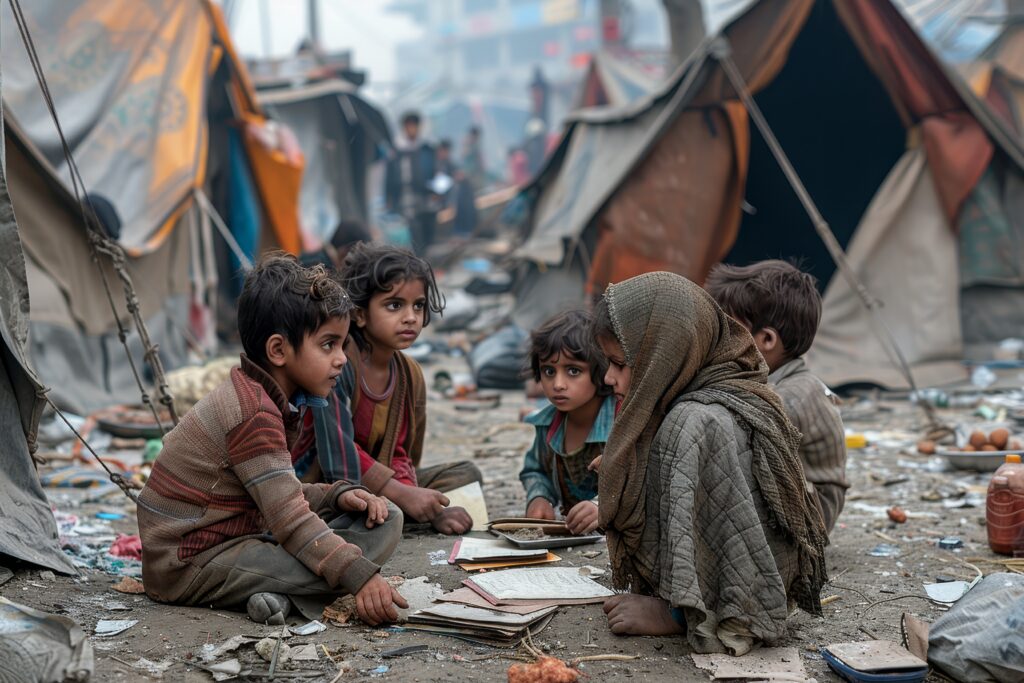Child Labour Laws in India
Child labour has been one of the most pressing social and legal issues in India. Despite rapid economic growth and progress in education, many children are still forced into labour due to poverty, illiteracy, unemployment, and lack of social security. To protect the rights of children and ensure their holistic development, the Indian Constitution and various legislations strictly prohibit child labour and regulate adolescent employment. In this blog, we will explore the constitutional provisions, legislations, and legal framework related to child labour in India, along with challenges and the way forward. What is Child Labour? Child Labour refers to the employment of children below a certain age in work that deprives them of their childhood, hinders education, or harms their physical and mental development. According to the Child Labour (Prohibition and Regulation) Amendment Act, 2016, A child is defined as a person who has not completed 14 years of age. An adolescent is defined as a person between the age of 14 to 18 years. Constitutional Provisions Against Child Labour The Indian Constitution provides several safeguards for the protection of children from exploitation: Article 21A – Right to free and compulsory education for children aged 6 to 14 years. Article 23 – Prohibits trafficking, forced labour, and begar (bonded labour). Article 24 – Prohibits the employment of children below 14 years in any factory, mine, or hazardous work. Article 39(e) & (f) – Directive Principles of State Policy direct the State to ensure children are not abused and childhood is protected. Key Legislations on Child Labour in India 1. Child Labour (Prohibition and Regulation) Act, 1986 Prohibited the employment of children below 14 years in hazardous occupations and processes. Regulated working conditions of children in other employments. 2. Child Labour (Prohibition and Regulation) Amendment Act, 2016 This is a landmark amendment that strengthened the law further: Prohibition: Complete ban on employment of children below 14 years in all occupations and processes. Adolescents (14–18 years): Prohibited from working in hazardous occupations and processes. Exceptions: Children can help in family businesses or as artists in the entertainment industry, provided it does not affect their education. Punishment: Employers engaging children in labour can face imprisonment of 6 months to 2 years and fines from ₹20,000 to ₹50,000. 3. Factories Act, 1948 Prohibits employment of children below 14 years in factories. Adolescents (15–18 years) can work only after obtaining a fitness certificate from a certifying surgeon. 4. Mines Act, 1952 Strictly prohibits the employment of children below 18 years in mines due to hazardous conditions. 5. Bonded Labour System (Abolition) Act, 1976 Abolishes bonded labour and protects children from being trapped in debt-based exploitation. 6. Right of Children to Free and Compulsory Education Act, 2009 (RTE Act) Ensures free and compulsory education to children between 6 and 14 years, thereby preventing child labour indirectly. 7. Juvenile Justice (Care and Protection of Children) Act, 2015 Treats child labour as an offence and ensures care, protection, and rehabilitation of children in need. International Conventions India is also a signatory to several international conventions: ILO Convention No. 138 – Minimum Age Convention. ILO Convention No. 182 – Worst Forms of Child Labour Convention. UN Convention on the Rights of the Child (CRC), 1989 – Recognizes the right of children to be protected from economic exploitation. Challenges in the Implementation of Child Labour Laws Despite strong laws, child labour persists in India due to: Poverty – Families depend on children’s income for survival. Illiteracy – Lack of awareness about rights and laws. Weak Enforcement – Gaps in monitoring and implementation. Informal Sector – Children are often employed in unorganized and invisible work. Socio-cultural factors – Acceptance of child work in family businesses or as domestic help. Recent Measures by the Government National Child Labour Project (NCLP): Provides education, vocational training, and rehabilitation to rescued child labourers. Operation Smile & Operation Muskaan: Police initiatives to rescue and rehabilitate missing and child labour victims. Skill India & Mid-Day Meal Scheme: Indirectly encourage education and reduce child labour. Way Forward Strict enforcement of existing child labour laws. Awareness campaigns to educate parents and communities. Strengthening education – Better schools, mid-day meals, scholarships. Skill development for parents to reduce dependency on child income. Corporate responsibility – Businesses must ensure child labour-free supply chains. Child labour not only violates children’s fundamental rights but also affects the nation’s future by depriving millions of education and proper childhood. The Indian government has enacted several laws and policies to combat child labour, yet effective implementation and community participation are the keys to eradicating this problem. Disclaimer: This blog is for informational purposes only. It does not constitute legal advice. For legal queries on child labour cases, please consult a qualified lawyer.

